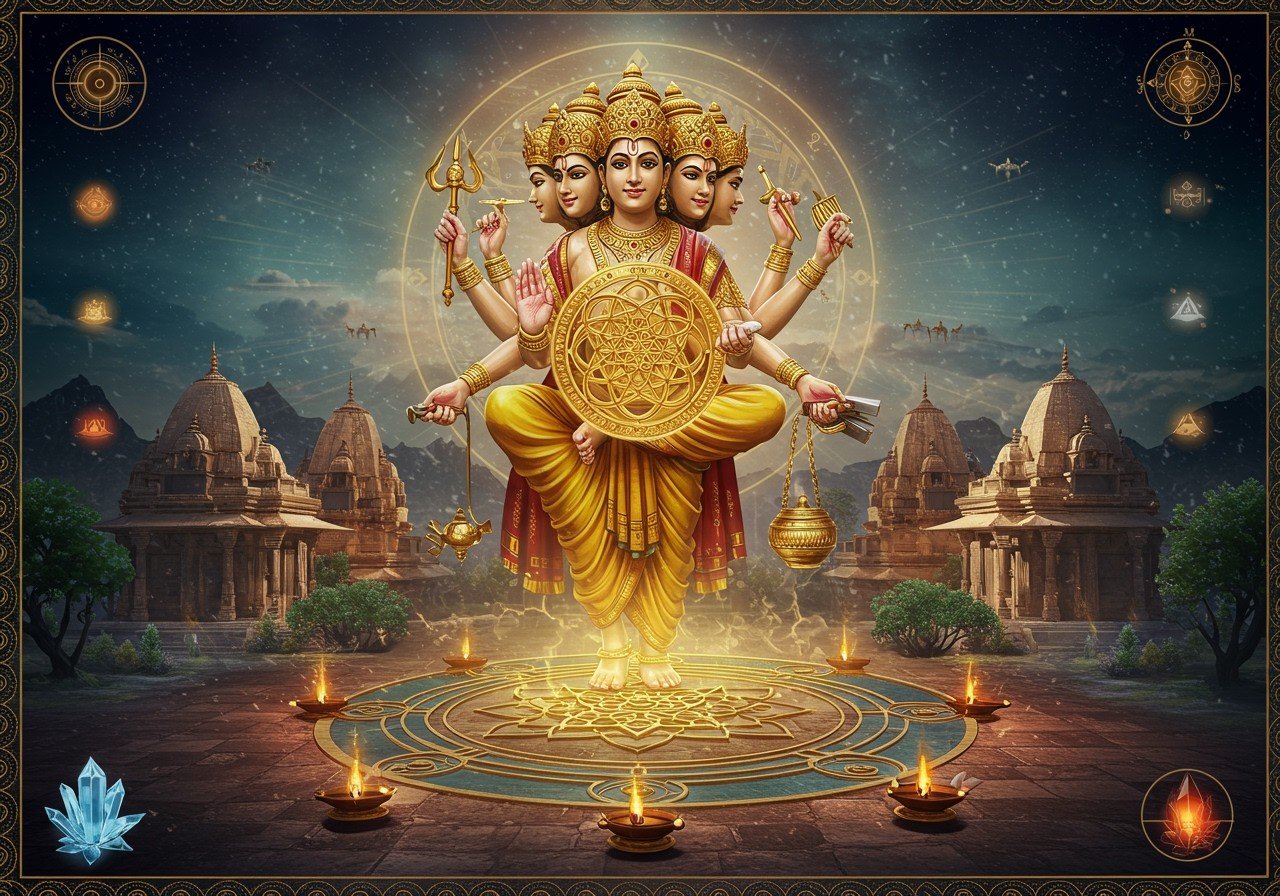
In today’s fast-paced world, many of us seek to blend the richness of tradition with the conveniences of modern living. Vishwakarma Vastu Shastra, a time-honored architectural science, offers a beautiful path to creating homes that resonate with harmony and positive energy. Rooted in ancient Indian wisdom, it provides guidelines for designing and building spaces that promote not just physical comfort, but also overall well-being and prosperity.
Imagine a home where the very structure nurtures your family’s happiness and success. That’s the promise of Vastu Shastra. It’s about more than just arranging furniture; it’s about aligning your living space with the natural forces that govern our lives, fostering a sense of balance and peace within your home.
Delving into the History and Significance of Vastu Shastra
Vastu Shastra’s origins trace back to the revered Vedic scriptures, with significant contributions from Vishwakarma, the celestial architect in Hindu mythology. He is revered as the divine craftsman who built the magnificent dwellings of the gods. This ancient science provided a framework for constructing not just homes, but also temples and palaces, ensuring these structures resonated with the natural world and reflected the cultural ethos of the time. Think of the intricate carvings and layouts of ancient temples – a testament to the deep understanding of Vastu principles.
You can explore more about Hindu scriptures here.
Understanding the Core Principles
At the heart of Vastu Shastra lie a few fundamental principles. The system emphasizes the harmony of the five elements – Earth, Water, Fire, Air, and Space (Panchbhootas). Each element holds a unique significance, and balancing them within a space is crucial. For example, earth represents stability, while water signifies purity and flow.
- Five Elements (Panchbhootas): Vastu Shastra emphasizes balancing the five elements – Earth, Water, Fire, Air, and Space – within a space, reflecting the interconnectedness of nature. Earth provides grounding and stability, while Water symbolizes flow and purification. Fire embodies energy and transformation, and Air signifies movement and freshness. Finally, Space represents openness and expansion, reminding us of the boundless possibilities within and around us.
- Directions: Every direction, according to Vastu, vibrates with a specific energy, overseen by different deities. For instance, North is associated with wealth and opportunities, while East is linked with overall success and new beginnings. South governs Dharma, righteousness, and ancestral connections, and West symbolizes prosperity and growth. The Northeast corner, considered highly sacred, is ideal for a prayer room or meditation space, while the Southeast is best suited for kitchens and fire-related activities. The Southwest is associated with skill development and family harmony, and the Northwest is ideal for the guest room or activities involving movement and exchange.
- Vastu Purusha Mandala: This cosmic energy grid forms the blueprint for a Vastu-compliant structure. The mandala maps out the energies residing in different parts of a building, guiding the placement of rooms for optimal energy flow and balance, ensuring that the home aligns with the cosmic forces.
- Balanced Architecture: Symmetry and balance in architectural design are not merely aesthetic considerations in Vastu. They represent the equilibrium and harmony that Vastu seeks to create. Proportional room sizes and balanced designs contribute to a sense of stability and peace within the home.
Vastu also recognizes the importance of cardinal directions, each associated with distinct energies and governed by various deities. For example, North is often linked with wealth, while East is associated with overall success. Additionally, the Vastu Purusha Mandala, a cosmic energy grid, plays a vital role in determining the ideal layout and room placement for optimal energy flow.
Vastu in Modern Homes
Incorporating Vastu into modern architecture is not just feasible but also incredibly beneficial. Many contemporary homes successfully integrate these principles, resulting in spaces that feel more balanced and harmonious. From urban planning to interior design, Vastu offers practical guidelines for creating environments that enhance our quality of life. And with the convenience of technology, resources like Vastu software and online consultations are readily available to guide you.
Would you like to delve deeper into the principles and practices of Vastu Shastra? Explore our insightful blog post on Vastu Shastra principles and practices.
Creating a Vastu-Harmonious Home
Applying Vastu principles to your home can make a profound difference in creating a positive living environment. Key areas to consider include the entrance, kitchen, living room, bedrooms, and bathrooms. The right plot selection and orientation are also crucial for residential buildings.
- Entrance: The main entrance is considered the “mouth” of the home, through which energy enters. Ideally, it should face North, East, or Northeast, as these directions are associated with positive energy and auspicious beginnings. This allows the beneficial morning sun to illuminate your home and invigorate its occupants. Decorative items can enhance the entrance’s auspiciousness.
- Kitchen: The kitchen, the heart of the home and a source of nourishment, is best placed in the Southeast, the fire element’s domain. This placement aligns with the natural flow of energy and supports efficient cooking practices. Check out our selection of flammables for your puja needs.
- Pooja Room: The Northeast corner, considered the most sacred, is the perfect location for your pooja room, creating a serene and spiritually charged space for prayer and meditation. Enhance your pooja room with authentic items from Poojn.in’s holy books and holy clothing collections.
- Bedrooms: The master bedroom, ideally situated in the Southwest, fosters stability and restful sleep. Avoid sleeping with your head facing North, as this can disrupt energy flow and create restlessness.
Even seemingly small details like color schemes, materials, and furnishings can contribute to a Vastu-compliant home. Many homeowners report experiencing tangible benefits after implementing these changes, including improved health, better relationships, and increased prosperity. Why not experience the positive transformation in your own home?
Poojn.in: Your Partner in Creating a Vastu-Harmonious Home
Poojn.in, India’s leading online store for cultural and religious products, is here to support you on your Vastu journey. We offer a wide selection of authentic Vastu items, from Yantras to sacred symbols, all carefully curated to help you create a harmonious living space. You can easily find everything you need, including Vastu correction tools, remedial products, and even expert guidance on placement, all from the comfort of your home.
Explore some of our specially selected products perfect for enhancing the positive energy in your home:
- Vaijanti Mala: This sacred garland is perfect for your daily prayers and meditation, enhancing the spiritual vibrations in your pooja room.
- Dakshina Maa Kali Murti: Place this beautifully crafted murti in your pooja room to invoke the blessings of the divine mother.
- Gomti Chakra: These natural stones are believed to attract positive energy and prosperity. Place them in your pooja room or other key areas of your home.
- Brass Statues: Invite divine blessings into your home with exquisitely crafted brass statues of deities like Hanuman Ji and Lord Ganesha. These statues serve as focal points for prayer and create a sacred ambiance.
With Poojn.in, embracing the wisdom of Vastu is easier than ever. Visit our website (www.poojn.in) or connect with us via phone (033-69029784) or WhatsApp (9476142738) to explore our collection and receive personalized guidance. We’re here to help you transform your house into a truly harmonious and prosperous home.


